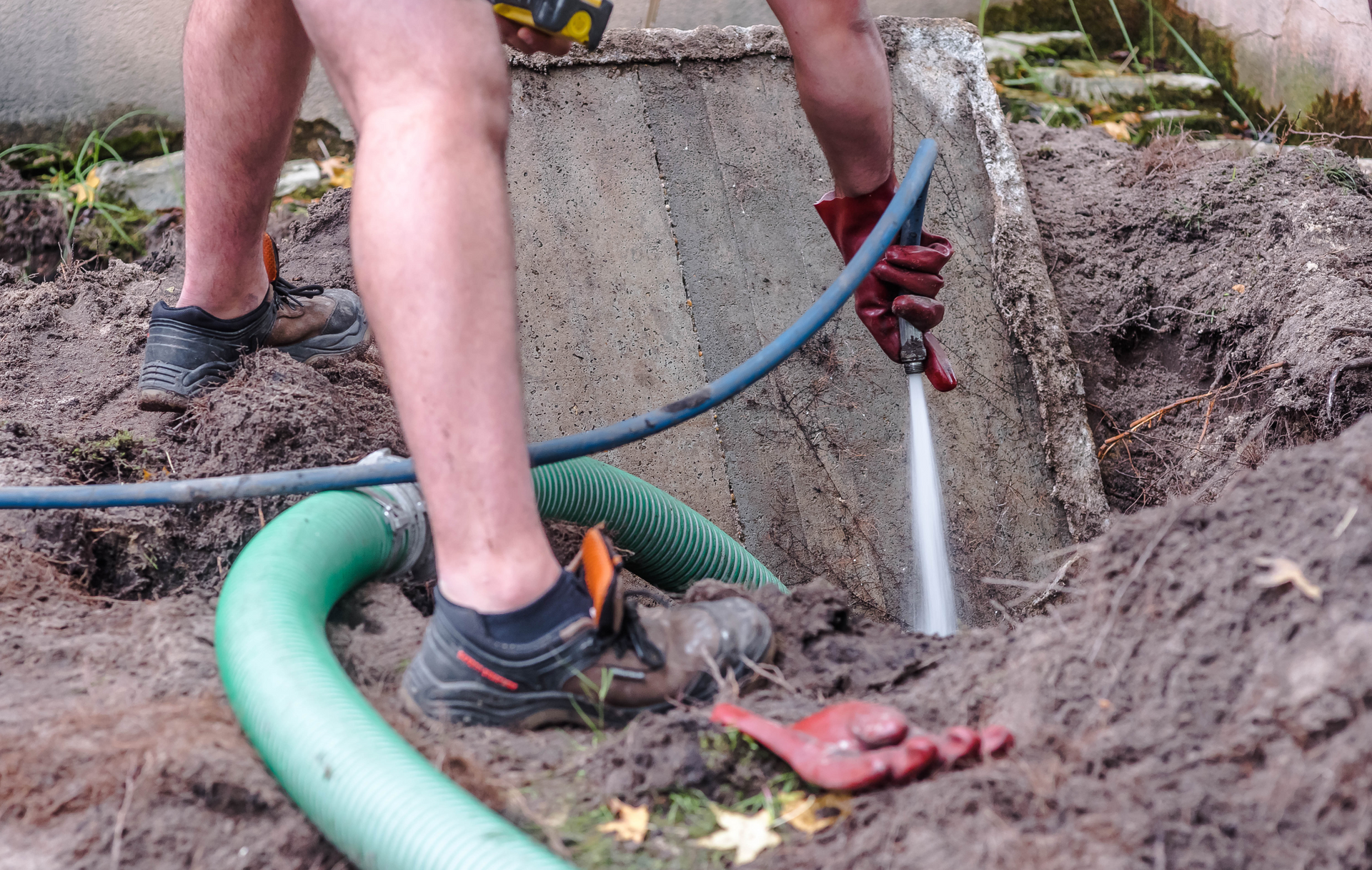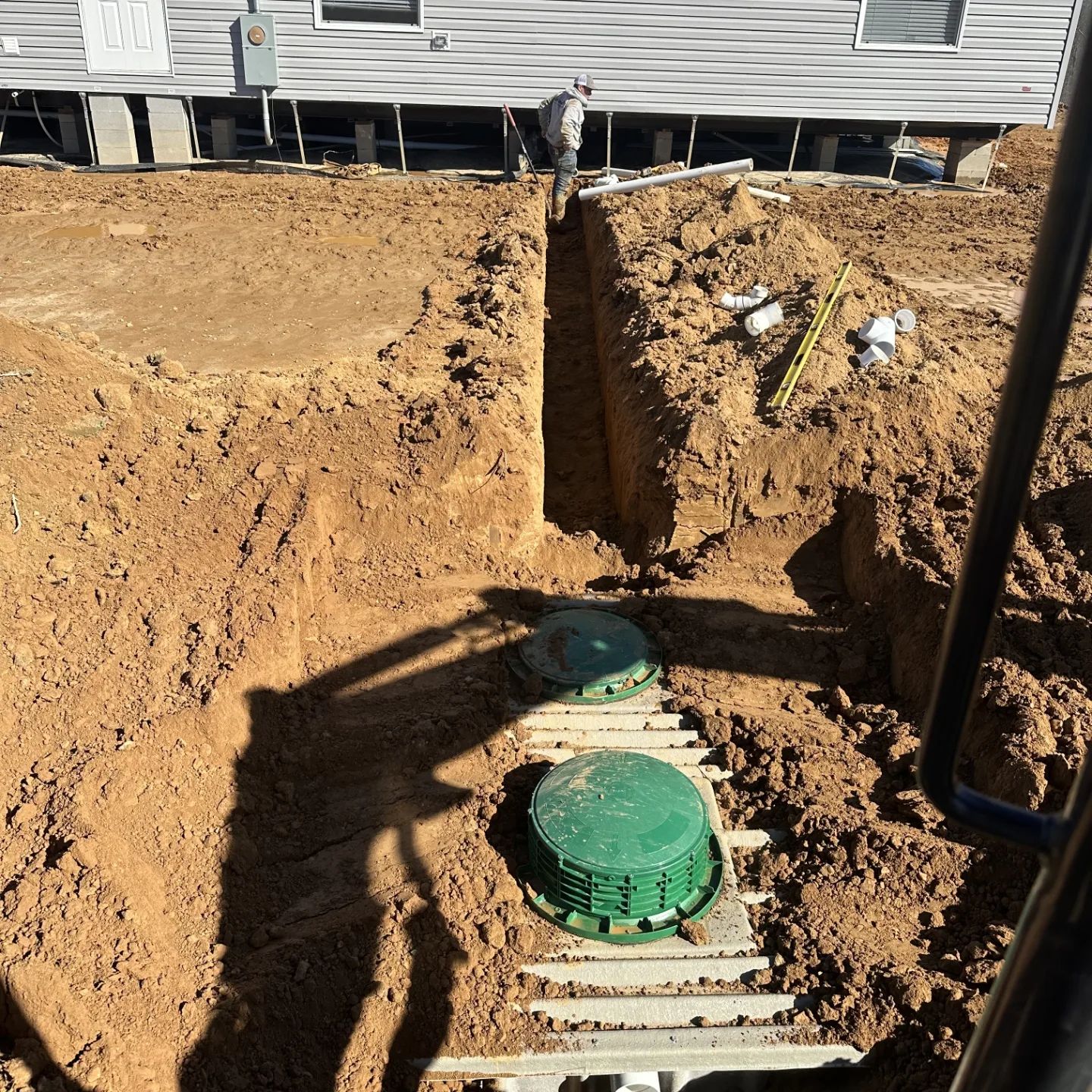Common Signs Your Drain Field Is in Trouble and How to React
March 4, 2024
Common Signs Your Drain Field Is in Trouble and How to React
Your septic system is a vital component of your home's wastewater treatment process, and the drain field plays a critical role in its proper functioning. Located underground, the drain field (also known as the leach field) is responsible for the final stage of wastewater treatment. It allows partially treated wastewater from the septic tank to disperse into the soil, where natural processes further purify it.
However, like any part of your septic system, the drain field can encounter issues that, if left unaddressed, can lead to costly repairs or even system failure. In this comprehensive guide, brought to you by Oxford Septic Service in Oxford, MS, we'll explore common signs that your drain field may be in trouble and how to react to these warning signals.
Sign 1: Slow-Draining Fixtures
Reaction: Slow drains in your sinks, showers, or toilets can be an early sign of drain field trouble. If multiple fixtures in your home are draining slowly, it's time to contact a professional septic service like Oxford Septic Service. Avoid using chemical drain cleaners, as they can harm your septic system.
Sign 2: Foul Odors
Reaction: Foul odors, particularly near your septic tank or drain field area, can indicate problems. These odors may be a result of wastewater not properly dispersing and releasing gases. Contact a septic professional to assess the situation.
Sign 3: Standing Water or Soggy Soil
Reaction: If you notice standing water or soggy, excessively green grass around the drain field, it's a sign that wastewater isn't properly absorbing into the soil. This could be due to clogs, compacted soil, or drain field damage. Do not attempt to dig or disturb the area; instead, contact a septic service provider for an inspection.
Sign 4: Sewage Backup
Reaction: Sewage backups in your home, such as toilets or drains overflowing, are serious issues that require immediate attention. This can indicate a severe drain field problem or septic tank failure. Cease water use and contact a professional emergency septic service immediately.
Sign 5: High Nitrate Levels in Well Water
Reaction: If you have a well on your property and regular water quality testing reveals high nitrate levels, it could be a sign of septic system issues, including drain field problems. Consult with a water quality expert to confirm the source of contamination and then schedule a septic inspection.
Sign 6: Greener Grass Over the Drain Field
Reaction: While you might assume that greener grass is a positive sign, an unusually lush and green patch of grass above your drain field can indicate problems. It may be a result of excess nutrients from untreated wastewater. Have a septic professional inspect the area.
Sign 7: Alarms or Warning Lights
Reaction: Many modern septic systems are equipped with alarms or warning lights to indicate issues. If your system has these features, pay attention to any alarms or lights and follow the manufacturer's instructions for troubleshooting. If you can't resolve the issue, contact a professional.
Sign 8: Frequent Septic Tank Pumping
Reaction: If you find yourself needing to pump your septic tank more frequently than usual, it could be a sign that the drain field is failing. Excess sludge and scum from an overwhelmed drain field may be causing the need for frequent pumping.
Sign 9: Gurgling Sounds in Plumbing
Reaction: Gurgling sounds from your plumbing fixtures can indicate that your drain field is struggling to handle the volume of wastewater. Contact a septic professional to assess the situation and make necessary repairs.
Sign 10: Unexplained High Water Bills
Reaction: If your water bills suddenly increase without a corresponding change in water usage, it could be due to water leaking from your septic system, including the drain field. Have a professional inspect the system for leaks.
In conclusion, recognizing the common signs of drain field trouble and reacting promptly is essential to prevent further damage and costly repairs. Your drain field's health is closely tied to the overall functionality of your septic system, so addressing issues as they arise is crucial. Regular septic system inspections and maintenance by a trusted provider like Oxford Septic Service in Oxford, MS, can help identify and address potential problems before they escalate. Don't wait until it's too late; take action when you notice any of these warning signs to protect your septic system and ensure the proper treatment of wastewater on your property.

Septic tank pumping is a crucial aspect of septic system maintenance that often goes overlooked by property owners. Regular pumping helps prevent costly repairs, prolongs the lifespan of the septic system, and protects the environment from contamination. In this guide, Oxford Septic Services shares valuable insights into the importance of routine septic tank pumping and its many benefits. Chapter 1: Understanding the Role of Septic Tank Pumping Overview of the septic tank pumping process and its significance in maintaining a healthy septic system Explanation of how septic tank pumping removes accumulated solids and sludge from the tank, preventing clogs and backups Chapter 2: Preventing Costly Repairs and System Failures Discussion of the potential consequences of neglecting septic tank pumping, including system backups, drain field damage, and groundwater contamination Exploration of the financial implications of septic system repairs and replacements compared to the relatively low cost of routine pumping Chapter 3: Extending the Lifespan of Your Septic System Explanation of how regular septic tank pumping helps prolong the lifespan of the septic system by reducing stress on system components and preventing premature failure Discussion of the correlation between routine pumping and the overall health and longevity of the septic system Chapter 4: Protecting the Environment and Public Health Examination of the environmental and public health risks associated with untreated wastewater discharge from poorly maintained septic systems Explanation of how routine septic tank pumping helps mitigate these risks by preventing groundwater contamination and protecting local water sources Chapter 5: Maintaining Property Value and Resale Potential Exploration of the impact of a well-maintained septic system on property value and resale potential Discussion of how routine septic tank pumping demonstrates responsible property ownership and can increase buyer confidence during real estate transactions Chapter 6: Ensuring Regulatory Compliance Overview of local regulations and requirements regarding septic system maintenance and pumping frequency Explanation of how routine septic tank pumping helps property owners remain in compliance with regulatory standards and avoid potential fines or penalties Chapter 7: Best Practices for Scheduling Septic Tank Pumping Recommendations for establishing a regular pumping schedule based on factors such as household size, water usage, and septic system capacity Tips for working with professional septic service providers like Oxford Septic Services to schedule timely and efficient pumping services Conclusion: Routine septic tank pumping is an essential aspect of responsible septic system ownership, offering numerous benefits for property owners, the environment, and public health. By understanding the importance of routine pumping and working with trusted professionals like Oxford Septic Services, property owners can ensure the long-term performance and reliability of their septic systems.

Installing a septic system is a critical step in ensuring proper wastewater management for residential and commercial properties. However, the installation process can be complex and requires careful planning and execution. In this comprehensive guide, Oxford Septic Services provides essential information and expert tips for homeowners and property owners considering septic system installation. Chapter 1: Understanding the Basics of Septic Systems Overview of septic systems and their components, including the septic tank, drain field, and distribution box Explanation of how septic systems function to treat and dispose of wastewater on-site, without access to a municipal sewer system Chapter 2: Assessing Site Conditions and Permitting Requirements Guidance on assessing soil conditions, topography, and site suitability for septic system installation Explanation of the permitting process and regulatory requirements for septic system installation, including obtaining necessary permits and approvals from local authorities Chapter 3: Designing the Septic System Overview of the steps involved in designing a septic system, including determining system size, layout, and location Discussion of factors to consider when designing a septic system, such as property size, soil type, and groundwater levels Chapter 4: Selecting and Installing Septic System Components Explanation of the different types of septic tanks, drain fields, distribution boxes, and other system components available for installation Step-by-step instructions for properly installing septic system components, including excavation, tank placement, piping installation, and backfilling Chapter 5: Ensuring Proper System Ventilation and Plumbing Connections Importance of providing adequate ventilation for the septic system to prevent the buildup of harmful gases, such as methane and hydrogen sulfide Guidelines for properly connecting plumbing fixtures, such as toilets, sinks, and showers, to the septic system to ensure efficient wastewater flow Chapter 6: Conducting Final Inspections and Testing Overview of the final inspection and testing process to ensure that the septic system meets all regulatory requirements and functions properly Explanation of common tests conducted during the final inspection, such as hydraulic load testing, dye testing, and soil percolation testing Chapter 7: Maintaining and Caring for Your New Septic System Recommendations for ongoing maintenance and care of the newly installed septic system, including routine pumping, inspection, and monitoring Tips for avoiding common pitfalls and ensuring the long-term reliability and performance of the septic system Conclusion: By following the guidelines and expert tips provided in this guide, property owners can navigate the septic system installation process with confidence. With careful planning, proper design, and professional installation by Oxford Septic Services, property owners can ensure the reliable operation and longevity of their septic systems for years to come.
